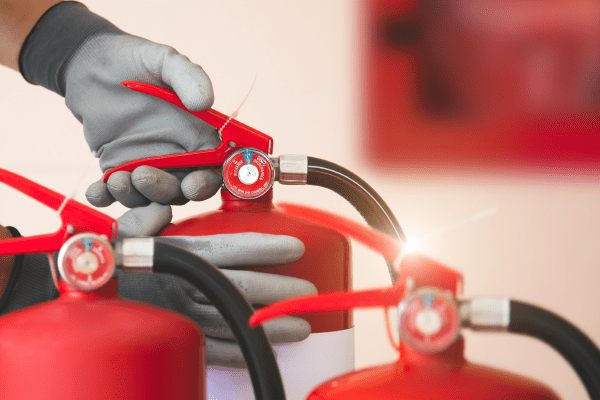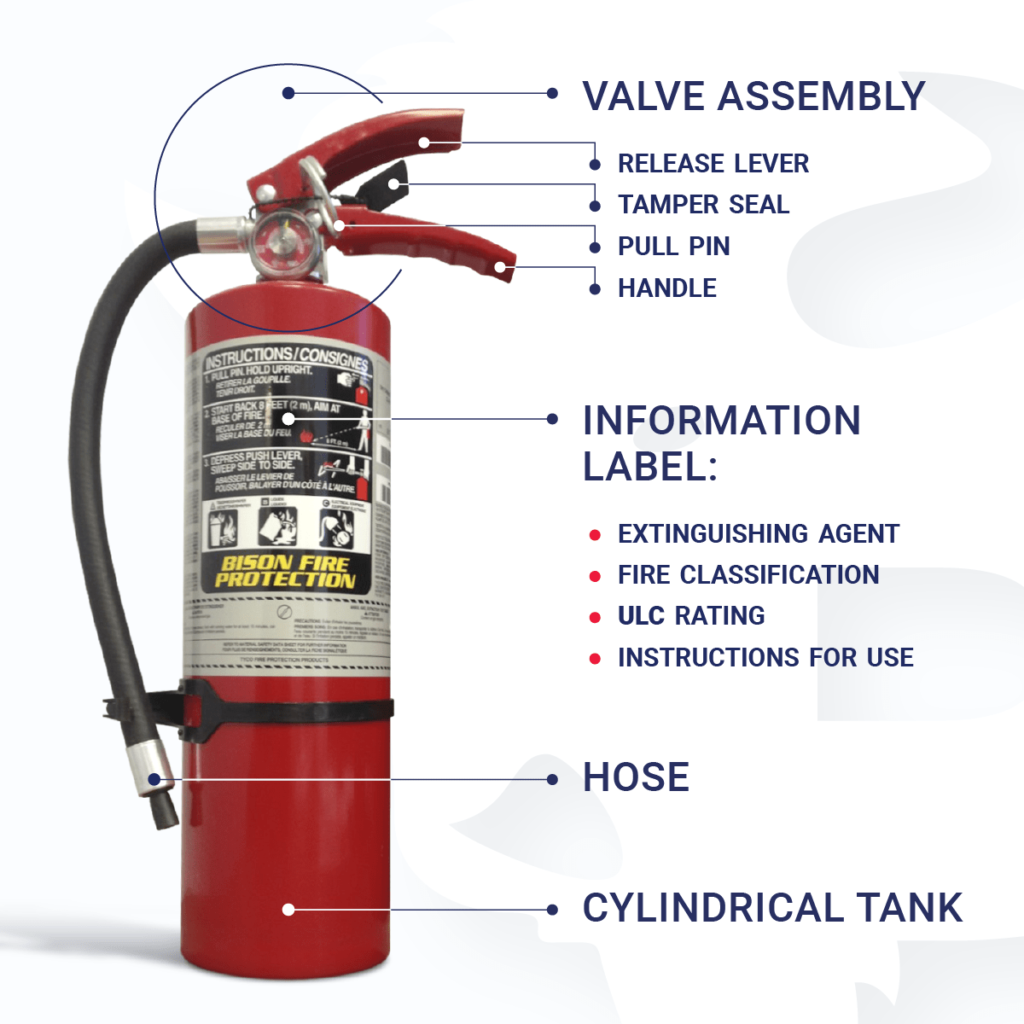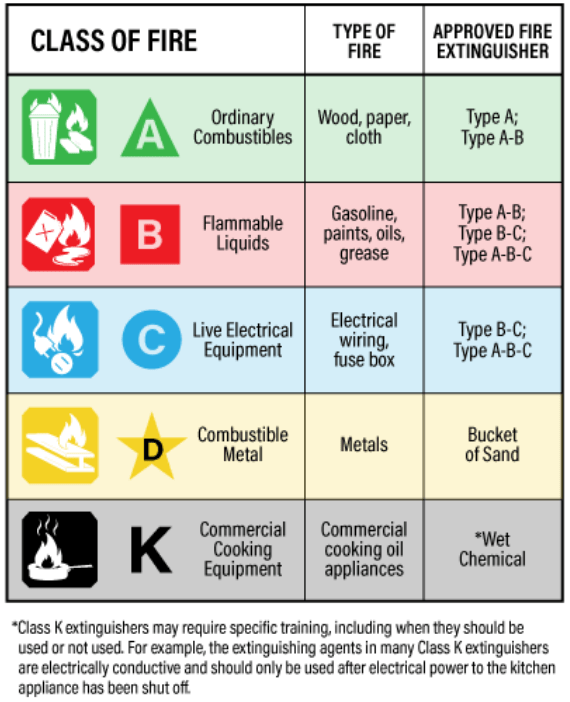Fire Extinguisher Training: How, What, and When to Use One

From its first invention in 1819, fire extinguishers have been an essential fire safety equipment in every establishment. This humble piece of equipment is everywhere, even under the sink or in the closet of residential homeowners. They’re compact, affordable, and can be your bridge to life when fire emergencies occur.
The problem is most people don’t know how to use them.
It’s common for the Bison Fire Protection team to encounter customers with fire extinguisher issues. Either it didn’t work, it didn’t work correctly, or it worked fine but they can’t believe they can’t use it again. When you’re faced with fire, the worst position you can be at is panicking over how the tool you have at hand can save you.
Having a tool won’t save you. Knowing how to properly use it will.
Fire extinguisher training is essential for life safety because the difference between panic and action is training.

How to Use a Fire Extinguisher:
The easiest way to remember fire extinguisher operation is the acronym P.A.S.S.
P – PULL
Pull the pin to activate the fire extinguisher. This pin keeps the fire extinguisher handles from being pressed accidentally. Keeping this on will make it impossible for anyone to release the contents.
A – AIM
Aim the nozzle at the base of the fire. Flames are just a by-product and aiming through them will not eradicate the fire completely.
S – SQUEEZE
Squeeze the handle to release the extinguishing agent.
S – SWEEP
Sweep from side to side, keeping it aimed at the base of the fire. Once the fire is out, check for areas that might re-ignite.
Knowing how to use a fire extinguisher is just one piece of a puzzle. Knowing what type of fire extinguisher to use is another.
These handy equipment aren’t a one-size-fits-all.
They vary in size and extinguishing agents, which make them either effective or destructive.
A good example of this is having a Dry Chemical ABC Extinguisher close by. It is versatile and can be used on almost anything but it isn’t advisable for use on your restaurant kitchen with Class K fires. When fire breaks out in a commercial kitchen, the dry chemical agent will caramelize in the heat of the grease and might even cause a reflash.
So the WHAT of fire extinguishers is just as important as the HOW.
What Kind of Fire Extinguisher to Use:

Dry chemical extinguishers – are multipurpose extinguishers that will work on almost anything. These are usually rated for Class ABC fires only. The dry chemical works by blanketing the fuel (burning materials) and interrupting the chemical chain reaction at the fuel’s surface.
K-Class Wet Chemical Extinguishers – are rated for Class K fires and will work best to put out fires in commercial kitchens. They work in two ways by cooling the fire and oil, while the specially-formulated extinguishant reacts to create a thick foam which smothers the fat and prevents it from reigniting.
D Class Extinguishers – rated Class D, Dry Powder Extinguishers are commonly used for metal fires. If you’re in a welding shop that works and cuts metals on a daily basis, the tendency for these materials to catch fire is huge. Keeping this kind of extinguisher close by will help you have peace of mind in the workplace. The powder agent used may be either powdered graphite, granular sodium chloride or copper based, all of which are effective at separating the fuel (the ignited combustible metal) from the oxygen.
Carbon Dioxide (CO2) Extinguishers – are another common type of extinguishers. They don’t have a gauge on them and you’ll usually find them with a great big horn at the end of the hose. People jokingly talk about using them to cool down their beer in summer because it contains liquefied CO2, an extremely cold agent. The liquefied CO2 is released in a form of gas, so use on places with strong wind currents are not advisable. These are rated for Class B and C fires only and will work well on electrical fires since it doesn’t conduct electricity.
Clean Gas Extinguishers – are best for computer rooms and data processing facilities. These facilities contain sensitive equipment with information that you will likely want to recover after the fire. Using a CO2 extinguisher will freeze up and cause damage to the servers, making it of little to no use for data recovery. On the other hand, a dry chemical extinguisher will do well putting out the fire but the clean-up afterwards, especially with small parts of the computers, makes it inefficient.
Clean gas extinguishers have compressed inert gases that doesn’t leave a residue when discharged, making it ideal for data processing facilities.
Water Extinguishers – are rated for Class A fires only. While we used to see those big two-and-a-half-gallon water extinguishers everywhere, you see them almost nowhere anymore because they have such limited use.
Water Mist Extinguishers – discharging fine droplets of demineralized water, these extinguishers are an all-around equipment rated for Class ABC fires. Since the water droplets are so fine, it won’t conduct electricity nor leave your place soaking wet like water extinguishers. Further damage to appliances and other electrical equipment are less likely to happen too compared to liquid CO2 that tackles extremely hot materials with an extremely cold agent.
Wheeled Extinguishers – are usually filled with dry chemical agent and used in industrial operations with unique hazards such as airports, mines, oil refineries and other heavy industrial operations.
Outside Cartridge-Operated Extinguishers – as opposed to stored-pressure extinguishers, cartridge-operated ones have the extinguishing agent in the cylinder and the propellant stored separately in a cartridge outside the cylinder. These are heavier and more durable compared to stored-pressure extinguishers which make it ideal for use in construction and heavy industrial operations.
When to Use a Fire Extinguisher:
The how and the what might feel empowering but knowing when to use a fire extinguisher is as vital as the first two topics.
In the event of fire, you might be tempted to use the fire extinguisher first because it’s cheaper to recharge. But this doesn’t always mean you’re choosing a more cost-effective solution. In some cases, you might be risking your life and your business doing so.
Imagine being in a restaurant kitchen and fire broke out.
Scenario 1: Fire Extinguisher First
You used your fire extinguisher but it’s not enough to put out all the fire, so it reflashes. Now, it’s had a chance to get more involved, more deep-seated. Then, your suppression system goes off, but you may still get hot spots here and there causing another reflash. So now, you have no backup anymore because you used up your fire extinguisher.
Scenario 2: Built-in Suppression System First
You let your built-in suppression system work first. Assuming it works as intended, it knocks down the fire. You have a minor reflash. Now a fire extinguisher can take it down all day. That’s why it’s a backup.
It’s not just the HOW to use a fire extinguisher but also WHAT and WHEN to use.
When should you use a fire extinguisher? When should you leave the building?
Knowing when to approach or abandon the site is important for life safety. Knowing that, sometimes, the smarter and more courageous move is to leave the building and make sure everyone with you gets out safely is critical. Take the fire extinguisher and, knowing how to use it, put out the fire on your way out.
Fire extinguisher training is crucial. It’s a must-have for everyone, not just facility managers or building officers. Even a small five-pound dry chemical extinguisher, when used correctly, will put out an incredibly large amount of fire.
Remember, the difference between panic and action is training.
Your safety is non-negotiable. You can’t put a price on your peace of mind. For an assessment on the right fire extinguisher to use, where to place it, and how to maintain, contact us today.


